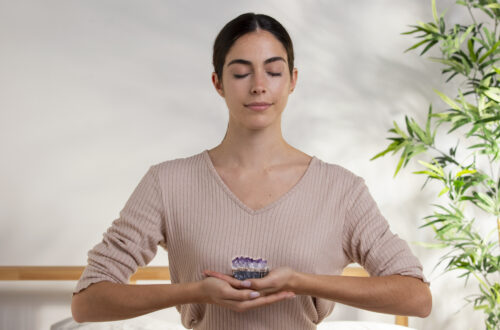Sustainable Beauty: A Comprehensive Guide to Eco-Friendly Practices

In the modern world, sustainability is no longer a choice but a necessity. As consumers become more conscious of the environmental impact of their choices, the beauty industry is undergoing a significant transformation. Sustainable beauty is not just a trend; it’s a movement toward eco-friendly, ethical, and health-conscious practices. This blog explores what sustainable beauty means, why it’s important, and how you can incorporate it into your daily routine.
What Is Sustainable Beauty?
Sustainable beauty refers to products and practices that minimize harm to the environment and prioritize ethical sourcing, production, and disposal. It includes using natural ingredients, eco-friendly packaging, and adopting practices that reduce waste and carbon footprints.
The core pillars of sustainable beauty include:
- Eco-conscious packaging: Use of recyclable, biodegradable, or reusable materials.
- Cruelty-free practices: Ensuring no animal testing during product development.
- Ethical sourcing: Ingredients are sourced without harming ecosystems or exploiting workers.
- Minimal environmental impact: Reducing water and energy usage during manufacturing.
Why Is Sustainable Beauty Important?
- Environmental Conservation
The beauty industry generates a massive amount of plastic waste annually. According to studies, about 120 billion units of packaging are produced by the cosmetic industry each year, most of which ends up in landfills or oceans. By switching to sustainable practices, brands and consumers can significantly reduce this impact. - Health Benefits
Sustainable beauty often means choosing products with organic and natural ingredients free from harmful chemicals like parabens, sulfates, and synthetic fragrances. These chemicals not only harm the skin but also seep into water supplies, causing long-term environmental damage. - Supporting Ethical Practices
By choosing sustainable beauty brands, you support companies that prioritize fair wages, ethical labor practices, and responsible sourcing. - Mitigating Climate Change
The production of beauty products often involves significant carbon emissions. Brands committed to sustainability focus on reducing their carbon footprint through renewable energy and eco-friendly supply chains.
Key Elements of Sustainable Beauty
1. Natural and Organic Ingredients
One of the most important aspects of sustainable beauty is the use of natural ingredients. These ingredients are biodegradable, less likely to cause skin irritation, and free from harmful pesticides.
Some popular natural ingredients include:
- Aloe vera: Hydrates and soothes the skin.
- Coconut oil: A versatile ingredient for moisturizing and cleansing.
- Green tea extract: Packed with antioxidants to fight aging.
- Shea butter: Excellent for nourishing dry skin.
2. Eco-Friendly Packaging
Packaging is a major contributor to waste in the beauty industry. Sustainable beauty brands are opting for:
- Glass containers: Recyclable and reusable.
- Bamboo packaging: A renewable resource with minimal environmental impact.
- Refill systems: Encouraging customers to reuse containers and reduce waste.
3. Cruelty-Free and Vegan Products
Cruelty-free beauty products are not tested on animals, ensuring ethical treatment of living beings. Vegan products go a step further by excluding all animal-derived ingredients, such as beeswax, lanolin, and collagen.
4. Waterless Beauty
Water is a finite resource, yet it is a primary ingredient in most beauty products. Waterless beauty products, like solid shampoos and oil-based cleansers, are not only more concentrated but also reduce water usage during production.
5. Zero-Waste Practices
Zero-waste beauty aims to eliminate all forms of waste by using compostable materials, refill stations, and recyclable packaging. Some brands even encourage customers to return used containers for discounts on future purchases.
Top Sustainable Beauty Brands to Watch
- Lush Cosmetics
Known for their solid shampoos and naked (packaging-free) products, Lush is a pioneer in zero-waste beauty. - The Body Shop
The Body Shop emphasizes fair trade, ethical sourcing, and cruelty-free practices. - RMS Beauty
This brand focuses on organic ingredients and recyclable packaging. - Herbivore Botanicals
Herbivore combines plant-based ingredients with sustainable glass packaging. - Aether Beauty
Aether is a leader in creating vegan, cruelty-free makeup with fully recyclable packaging.
How to Incorporate Sustainable Beauty into Your Routine
- Do Your Research
Before purchasing, research brands to ensure they adhere to sustainable practices. Look for certifications like:
- Leaping Bunny: Cruelty-free certification.
- USDA Organic: Ensures organic ingredients.
- ECOCERT: Verifies natural and organic cosmetics.
- Opt for Multi-Use Products
Reduce waste by choosing products that serve multiple purposes, like tinted moisturizers with SPF or lip and cheek tints. - Reuse and Recycle
Instead of discarding old containers, find ways to reuse them. Many brands offer recycling programs where you can return empty containers. - Support Local Brands
Local brands often have a smaller carbon footprint due to reduced shipping distances. - DIY Beauty Products
Create your own beauty products using natural ingredients like honey, yogurt, and essential oils. This not only saves money but also eliminates the need for packaging.
Challenges of Sustainable Beauty
While sustainable beauty is essential, it comes with challenges:
- Higher Costs
Eco-friendly ingredients and ethical practices often lead to higher product prices. However, many argue that the long-term environmental and health benefits outweigh the cost. - Greenwashing
Some brands falsely claim to be sustainable. Always verify claims through certifications and ingredient lists. - Limited Availability
Sustainable beauty products may not be as widely available as conventional ones, especially in rural areas.
The Future of Sustainable Beauty
As consumer awareness grows, more brands are adopting sustainable practices. Innovations in biotechnology, such as lab-grown ingredients and carbon-neutral production methods, are revolutionizing the industry. The shift toward refill stations in retail stores and digital product transparency tools is also paving the way for a more sustainable future.
The rise of sustainable beauty influencers and communities is further educating consumers on the importance of eco-friendly choices. Social media platforms have become powerful tools for spreading awareness and holding brands accountable.
Conclusion
Sustainable beauty is not just about the products we use but also about the mindset we adopt. By choosing eco-friendly, cruelty-free, and ethically produced products, we can make a significant difference to our planet and our health. Small steps, like switching to refillable packaging or opting for natural ingredients, can collectively create a massive impact.
As the beauty industry evolves, sustainable beauty will undoubtedly become the norm rather than the exception. By embracing this movement, we contribute to a healthier planet, a more ethical industry, and a brighter future for generations to come.
Frequently asked questions
1. What does sustainable beauty mean?
Sustainable beauty refers to eco-friendly and ethical practices in the beauty industry. It involves using natural and organic ingredients, eco-conscious packaging, cruelty-free production, and reducing environmental impact during manufacturing.
2. How can I identify a sustainable beauty brand?
Look for certifications like Leaping Bunny (cruelty-free), USDA Organic, or ECOCERT. Check the brand’s website for transparency about their sourcing, packaging, and environmental practices.
3. Are sustainable beauty products more expensive?
Sustainable beauty products may have a higher upfront cost due to ethical sourcing and eco-friendly packaging. However, they often last longer, provide better skin benefits, and contribute to a healthier planet, making them a worthwhile investment.
4. Can I create my own sustainable beauty products at home?
Yes! DIY beauty products using natural ingredients like coconut oil, aloe vera, and essential oils are an excellent way to practice sustainable beauty. They eliminate packaging waste and allow you to customize ingredients.
5. What is zero-waste beauty?
Zero-waste beauty focuses on eliminating waste through practices like refillable packaging, compostable materials, and recycling programs. Brands like Lush and The Body Shop are pioneers in zero-waste beauty.
6. What are some examples of waterless beauty products?
Waterless beauty includes solid shampoos, oil-based cleansers, and powder face masks. These products not only save water but are also more concentrated, lasting longer than traditional formulations.
7. How does sustainable beauty help the environment?
Sustainable beauty reduces plastic waste, conserves resources like water, limits carbon emissions, and prevents harmful chemicals from polluting ecosystems.
“To learn more about the global impact of beauty industry waste and the importance of sustainable practices, visit the Environmental Working Group (EWG). This organization provides valuable insights and resources on clean beauty and eco-friendly choices.”
- The Ultimate Guide to Cold Plunge Therapy: Benefits, Risks, and How to Get Started
- “Mental Wellness: Nurturing Your Mind for a Better Life”
- Holistic Wellness Beauty: Unlocking the Secret to True Radiance
- Sustainable Beauty: A Comprehensive Guide to Eco-Friendly Practices
- AR and VR in Beauty: Transforming the Industry with Immersive Technology





